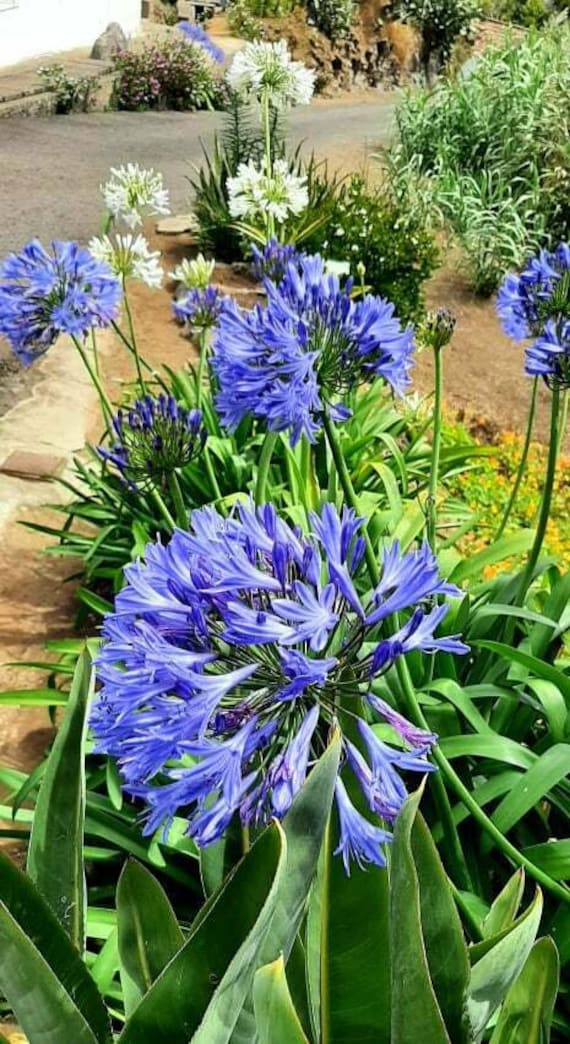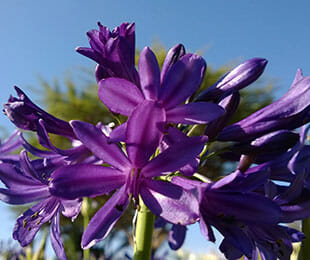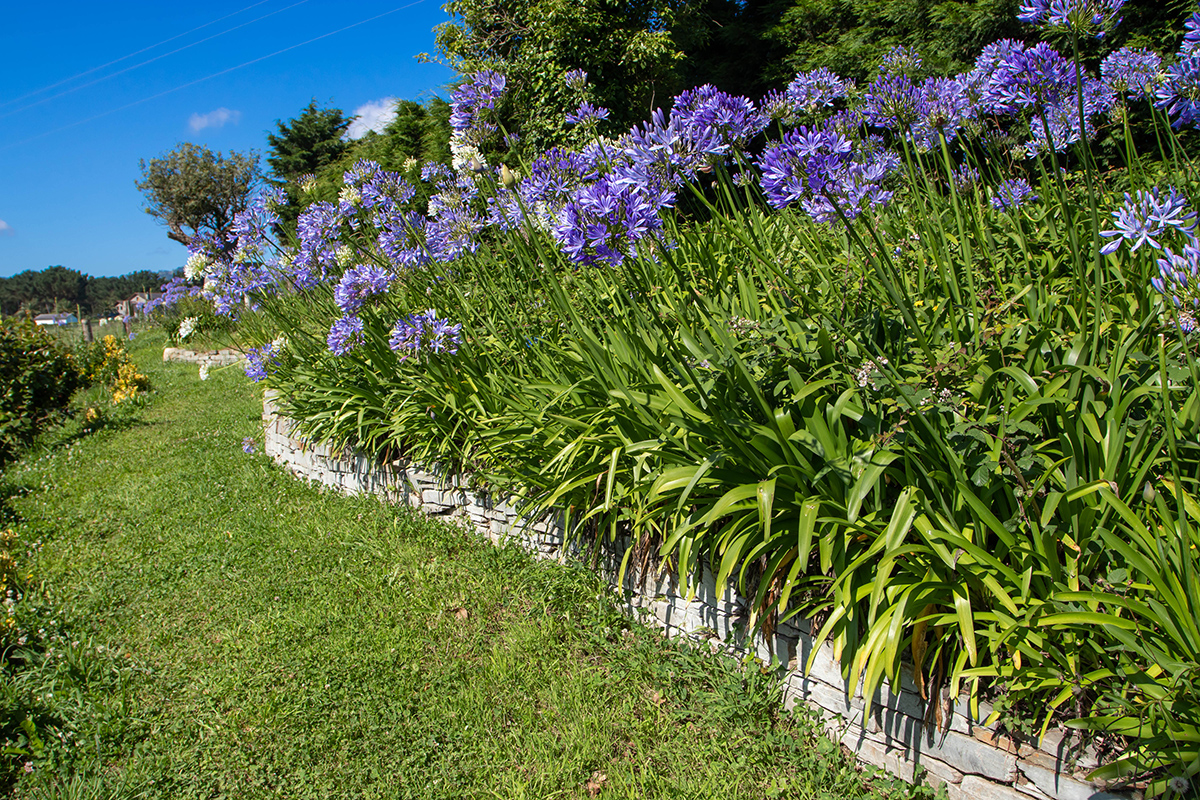Just how to Plant and Maintain Agapanthus in Your Yard
Just how to Plant and Maintain Agapanthus in Your Yard
Blog Article
Grasping the Art of Agapanthus Treatment: Vital Steps for Healthy And Balanced Development and Lively Blooms
In the realm of horticulture, the growing of agapanthus stands as a satisfying undertaking for those that look for to nurture these sophisticated blooming plants. From picking the ideal variety to understanding trimming techniques, the trip towards growing prospering agapanthus plants is multifaceted and holds the crucial to unlocking the complete possibility of these herb gems.

Picking the Right Agapanthus Selection

When picking the ideal Agapanthus range for your garden, take into consideration aspects such as environment suitability, flower shade, and development practice. Agapanthus, frequently referred to as Lily of the Nile or African lily, comes in a range of shades ranging from shades of purple and blue to white. Select a flower color that enhances your existing yard palette to develop an unified landscape. In addition, think about the environment in your area to make certain the Agapanthus range you pick can flourish in your details problems. Some ranges are more forgiving of cold temperature levels, while others favor warmer climates. Understanding the development habit of various Agapanthus ranges is critical for proper positioning within your garden. Some selections have a clumping development habit, perfect for borders or containers, while others have an even more spreading nature, appropriate for ground cover or mass plantings. By very carefully assessing these elements, you can pick the ideal Agapanthus variety to boost the appeal of your garden.
Ideal Planting Problems
Taking into consideration the ideal ecological needs is essential for successful Agapanthus farming. Agapanthus flourishes in well-draining dirt with a somewhat acidic to neutral pH level. When planting, pick a location that receives full sunlight to partial color. In hotter environments, giving some afternoon color can prevent scorching of the leaves. Agapanthus plants are delicate to cold temperature levels and need to be secured from frost throughout winter season.
To ensure healthy growth and vibrant blooms, plant Agapanthus bulbs at a depth of regarding 2-4 inches and area them 8-12 inches apart. Adding organic matter, such as compost, to the soil can boost water drainage and fertility, advertising robust origin growth. Mulching around the base of the plants assists maintain wetness and subdues weed development. Routine watering is essential, specifically throughout the expanding season, to maintain the dirt continually moist however not saturated.
Watering and Fertilizing Tips
Preserving proper dampness degrees and offering vital nutrients are essential elements in the care routine for Agapanthus plants. When it pertains to watering Agapanthus, it is critical to strike a balance. These plants prefer continually moist dirt but are prone to root rot if overwatered. During the growing season, water deeply as soon as a week, ensuring the dirt is well-draining to stop waterlogging. In hotter climates or throughout periods of dry spell, more regular watering might be required to maintain the soil equally moist. Nonetheless, lower watering in the winter season to avoid water logged problems.
Feeding Agapanthus is essential for promoting healthy and over here balanced growth and respected blooms. Use a well balanced plant food, such as a 10-10-10 formula, in the very early springtime as brand-new growth emerges. Repeat this application every 6-8 weeks throughout the expanding period. Prevent excessive fertilization, as it can lead to lush foliage at the expense of blossoms. Constantly comply with the maker's instructions for appropriate dilution and application approaches. By following these watering and fertilizing ideas, you can ensure your Agapanthus plants thrive and produce see here vivid, durable blossoms.
Trimming Techniques for Agapanthus
Trimming Agapanthus plants at the ideal times and with appropriate techniques is crucial for preserving their health and advertising optimum growth and blooming. The excellent time to prune Agapanthus is in late winter months or very early springtime before new growth emerges.
Deadheading spent flowers can likewise redirect the plant's energy right into generating more flowers rather than establishing seeds. If you want to accumulate seeds for proliferation, leave some flowers to mature and completely dry on the plant.
Keep in mind to utilize tidy, sharp devices to make precise cuts and reduce the threat of introducing conditions. Agapanthus. Regular trimming will certainly aid maintain your Agapanthus looking healthy and neat while guaranteeing a plentiful display of lovely blossoms
Taking Care Of Usual Insects and Conditions
After making sure correct trimming strategies for Agapanthus, it is necessary to resolve typical insects and conditions that can affect the health and wellness and vigor of these plants. Agapanthus plants are normally durable yet can still succumb certain issues. One typical parasite that impacts Agapanthus is the Agapanthus gall midge. This little, orange fly lays its eggs in the foliage, causing altered development and flower buds that stop working to open. To battle this insect, trim and damage any damaged plant parts and think about utilizing insecticidal soap.
An additional usual problem is fungal fallen leave place, which provides as dark lesions on the fallen leaves. To avoid fungal conditions, make certain good air blood circulation around the plants, prevent overhead watering, and get rid of any type of contaminated leaves quickly. In addition, Agapanthus plants can experience root rot if they are grown in poorly draining pipes dirt. To stop this, plant Agapanthus in well-draining dirt and prevent overwatering. By being attentive and taking prompt activity versus diseases and insects, you can aid your Agapanthus plants prosper and generate lively blooms.

Verdict
Finally, understanding the art of agapanthus treatment includes choosing the right variety, giving perfect growing problems, correct watering and fertilizing, suitable pruning strategies, and resolving typical insects and diseases. By complying with these essential actions, you can ensure healthy and balanced growth and lively flowers for your agapanthus plants. Keep in mind to frequently keep track of and keep your plants to advertise their overall well-being and long life.
To ensure healthy development and vivid flowers, plant Agapanthus light bulbs at a deepness of concerning 2-4 inches and space them 8-12 inches apart. By complying click here to read with these watering and feeding suggestions, you can ensure your Agapanthus plants prosper and produce vivid, lasting blossoms.
One usual pest that impacts Agapanthus is the Agapanthus gall midget. Additionally, Agapanthus plants can experience from origin rot if they are grown in inadequately draining dirt. By adhering to these vital steps, you can guarantee healthy and balanced development and dynamic blooms for your agapanthus plants.
Report this page